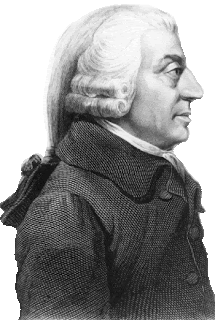Adam Smith's Pin Factory

Adam Smith - Our Founding Father ADAM SMITH VISITS A PIN FACTORY Adam Smith’s description of a pin factory is on the first page of The Wealth of Nations . (Chapter 1 – “Of the Division of Labour”) Drawings of pin factories of this period show workers using hand tools. Smith says the process can be broken down into 18 distinct steps, including packaging the pins. Smith mentions that pin factory workers were poorly paid, despite their high productivity. Adam Smith says he visited a pin factory employing 10 men who produced 48,000 pins per day. If each of the ten workers had done all the steps themselves, Smith says each worker could produce only 10 or 20 pins per day. So the pin factory supposedly replaces 2,400 to 4,800 pin makers. The increase in labor productivity (output per person per day) is as high as 50 times that of individual pin makers. This reduction in unit cost or average cost (AC) and the huge increase in ...


